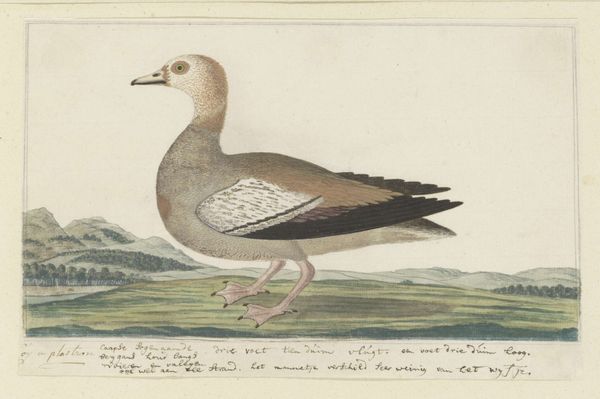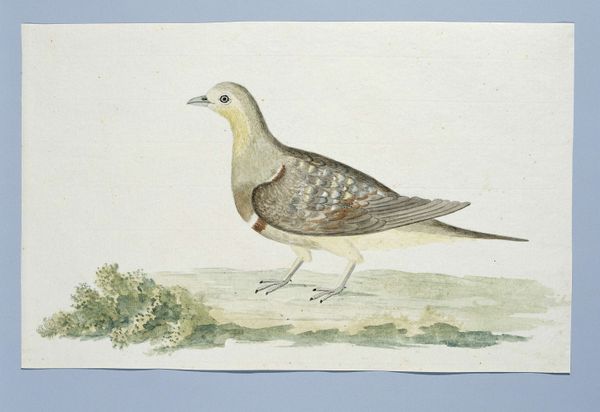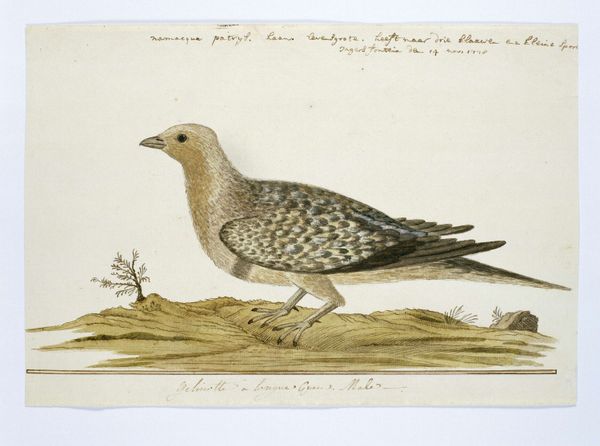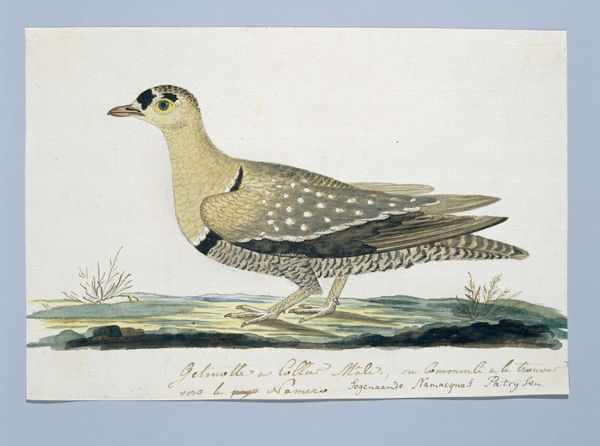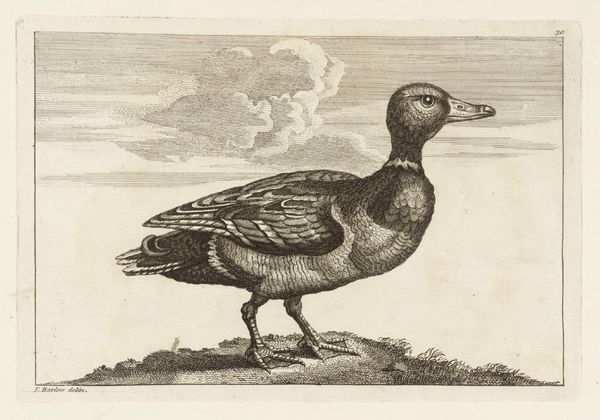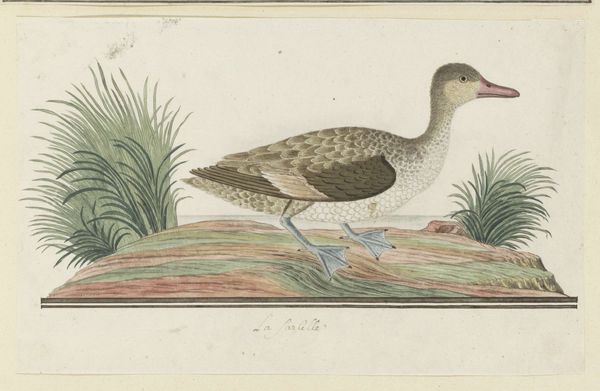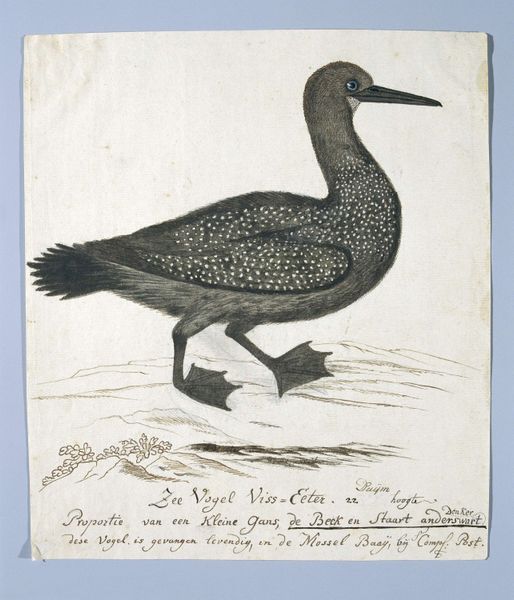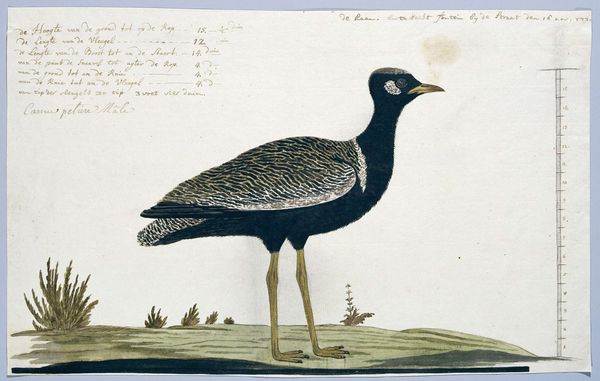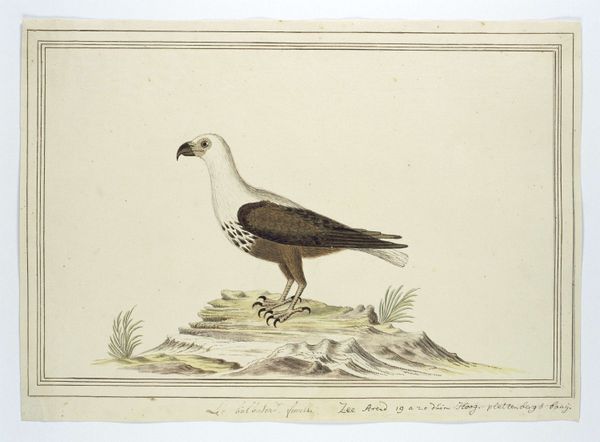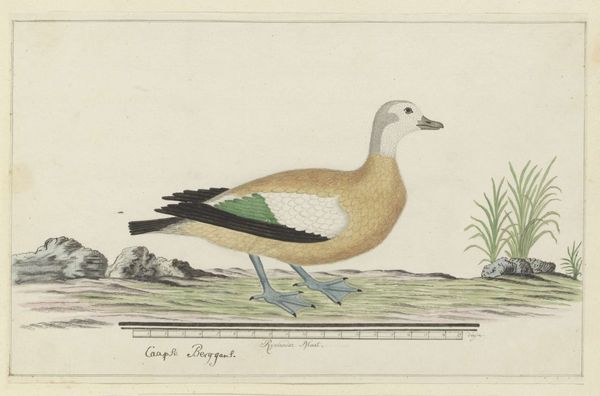
drawing, paper, watercolor
drawing
water colours
landscape
paper
watercolor
coloured pencil
watercolour illustration
naturalism
watercolor
Dimensions: height 660 mm, width 480 mm, height 217 mm, width 336 mm, height mm, width mm
Copyright: Rijks Museum: Open Domain
Editor: Here we have Robert Jacob Gordon's watercolor and pencil drawing, "Tadorna cana (South African shelduck)," possibly from 1777 to 1786. The almost scientific precision makes me wonder, what formal elements stand out to you in this piece? Curator: The meticulous application of watercolor is indeed striking. Note how Gordon employs distinct textural variations. The plumage of the shelduck is rendered with a stippled effect, creating a sense of depth and volume, contrasting against the smoother, almost linear depiction of the surrounding flora. Editor: I see that now, the reeds versus the feathers. So it's about how he contrasts the textures. Curator: Precisely. Consider also the color palette: muted earth tones dominate, lending the composition a certain harmony. Observe, however, how the strategic placement of the white markings on the shelduck's wing creates a focal point, disrupting the potential monotony and drawing the eye. This establishes a figure-ground relationship with the grassy brush and flat, shadowed plane on which the shelduck stands. Editor: Are the subtle colour choices as important as the stark ones? Curator: The subtleties are paramount. The restrained color scheme serves not only to mimic the natural environment but also to underscore the shelduck's form. A brighter palette might overwhelm the delicacy of the draughtsmanship. We can note the relationship between form and content through the technique. Editor: That’s interesting! It really emphasizes the importance of analyzing how the colors and textures contribute to the overall effect. Curator: Yes, it shows the artist considered how each formal element informs the viewing experience, how the structural cohesion lends the composition integrity, and thus meaning.
Comments
No comments
Be the first to comment and join the conversation on the ultimate creative platform.
